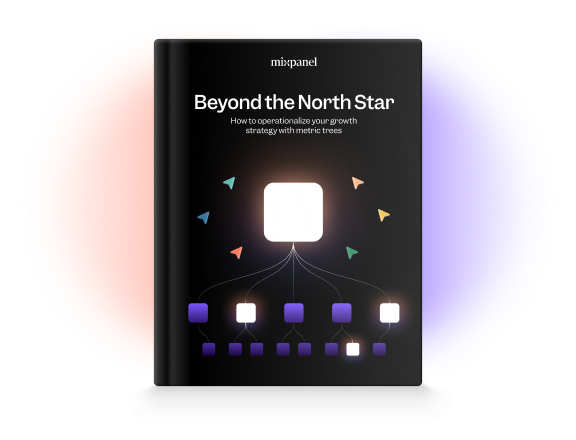Product management in a driverless world
A few days ago, while I was walking to work, an enthusiastic pedestrian jostled me out of my commuter daze; he pointed out an inconspicuous Uber doing a driverless test in downtown San Francisco. It felt like a moment, like the first time I used an iPhone. And it was there I thought – how will we product manage a driverless world? What are the necessary PM skills? What behaviors can we expect to change with this new culture and technology?
While product managers and engineers at Google, Uber, Cruise and other leading automotive companies are inventing our future, it won’t just be the car experts impacting our driverless world. Today’s leading experts in e-commerce, venture capital, and enterprise software will also participate in creating this new ecosystem of transportation and new business models.
So how exactly will PMs build and manage technology in the driverless future? In order to prepare for tomorrow’s reality, I wanted to sit down with a panel of product leaders to hear their expectations and predictions on what the job will look like in the next three to five years from now.
Meet The Panel:
- Brandon Chu, Senior Product Manager at Shopify
- Kevin Lee, Venture Capital Associate at FundersClub and Founder of Product Manager HQ
- Neil McCarthy, Product Lead at Yammer
Now fasten your seat belts. Here’s how to PM the driverless world.
What hard and soft skills do PMs need to have in the driverless world?
Kevin: PMs will have to spend a lot of time thinking about consumer trust. It’ll be tough for consumers to make this mental shift in the beginning because we’re asking people to cross a chasm and relinquish full control. People hate that.
You’ll notice the Google’s self-driving car looks … well, really cute. It has two eyes, similar to a Volkswagen Beetle.

Google did that because it feels friendly and helps to build trust. Additionally, even though they don’t need to, their self-driving car has a tablet in the vehicle that actually displays when it senses obstacles such as a pedestrian crossing. Their computer vision and algorithms are way smarter and more perceptive than a human’s motor skills. But the tablet display helps build up a sense of trust so that a passenger can visually be reassured that the car knows what’s going on externally and this in turn helps a passenger build a trusting relationship with the car.
Neil: One major skill PMs will need in the driverless future is to understand the real world and how it’s going to impact the product. For example, the people who design the physical interior of a self-driving car have to consider that the experience may be terrifying (or exhilarating) for passengers. So with that, there can’t be too many changes to the physical “product” since the experience is taking such a leap.
PMs will have to configure solutions for passengers when they have to problem solve on the fly, like when the car gets stuck or breaks down. Questions can get as granular as how do we communicate something that’s digital, like a map’s ETA, in the physical world.
There will be an overlap in the skills PMs use at a pure internet tech company. However, depending on your focus at a driverless company, prerequisites will start to reflect those that build elevators or construction equipment. It’s a blend of civil and software engineering.
Brandon: We’ll have to stop thinking about the car as just a product and think of it more as a platform. When driverless becomes the norm, a car is basically a moving box that’s connected to the internet where people spend time between physical locations. “Apps” on this platform in this context could still be software, but they could also be physical features like having a training bike in the car for in-transit workouts.
For PMs, you’ll either manage the platform by creating the right extensibility and nurturing the developer ecosystem, or you’ll be a PM focused on building one of those apps. On either side, PMs will need to bridge their skills across industrial and software design, and enter other domains like regulatory, insurance, and AI in order to be effective.
It is truly a platform where everything, even down to the drive train, or the energy system it uses – electric, gas, or whatnot – to the actual logic of how it handles being driverless becomes a platform.
Kevin: That’s a great way to put it. If there’s an open OS, and Google willingly opens it to the public like Android, then any car manufacturer or developer can develop on the self-driving OS.
What are some other key points to product management in the driverless world?
Neil: I think it’s an accurate assumption to say that most of the product managers of today have never worked on a product where “failure” of the product meant someone might be killed. In that, there’s a major shift in expectations and the stakes are so much higher than working at any other pure internet company.
Kevin: Definitely. Upholding safety is the number one concern for all PMs. There have been many concerns voiced about what happens when a self-driving car is forced into a situation between sacrificing the life of its passengers or a pedestrian on the sidewalk. It’s somewhat of a philosophical debate – do you take a utilitarian approach to save as many lives as possible or does the OS always prioritize the passenger? I imagine over time, regulation will standardize safety the more and more we collect data to learn from it.
Brandon: The influence of safety as a critical car feature will grow in the future. Companies will start comparing algorithms competitively as a major selling point – “X autonomous cars are .1% safer than Y autonomous vehicles,” for example.
Where it gets dark is how cars handle the owner’s safety relative to the safety of others. Is there a car company that makes a selling point that “in all cases it will protect your life above all else?” Even at the cost of many other lives? What is the regulatory environment that needs to form around that? I can see the government having to control and approve driverless car AI.
Neil: Ensuring safety will be the number one priority. We also have to consider that there will be an entire generation just getting use to the idea of losing control of driving.
What Google is doing with self driving cars now is the right way. They have a super long beta program that trains an algorithm to have encountered so many different scenarios that by the time Google deploys and scales, the driverless algorithm is safety tested.
Once safety is ensured, what major changes in the car experience do you predict?
Neil: The PMs of the future will need interior design skills. Right now, Uber and Lyft are two companies that are the closest thing we have to self-driving cars. You don’t have to drive them. You get to the place that you were going to you. However, in the future, the layout of the car will reflect a passenger’s requested experience.
For example, if you’re hosting a conference call during your commute with co-workers, you might request one that’s more spacious with screens, a coffee maker and teleconferencing systems, etc. If you’re going for a longer drive, it might resemble a comfortable WeWork space or Airbnb.
The long-term future vision is to turn the car into shared-space with the other people. Understanding the purpose of a passenger’s travel will be crucial for driverless car companies, like Uber, to give you the right experience.
Brandon: All the industrial design we’ve been optimizing for since the existence of cars, around aerodynamics, engine size, etcetera, is sort of out the window. For example, now, you actually want to reduce engine size, that way, you make the interior room as big and comfortable as possible.
If people don’t own cars as much, maybe they don’t care at a vanity level what the exterior of the car looks like. It’s all about the inside experience. There will probably be a whole wave of just interior decoration and furniture. There’s condo furniture, and now there’s car furniture.
Kevin: The funny thing about self-driving cars is that ironically you’re not designing for the driver, you’re designing for the passenger only. There’s no such thing as a driver anymore. This fundamentally alters how PMs should think about re-designing existing standard car components like the steering wheel or gas and brake pedals.
What cultural norms will shift with driverless cars?
Neil: Autonomous vehicles will increase the car-sharing and car-pooling culture even further.
Kevin Lee: We can be fairly certain that private companies like the Ubers of the world or city governments will run entire fleets of autonomous vehicles available on-demand which may severely impact individual car ownership. Cars have always been a depreciating asset that aren’t used for the majority of the day so it technically makes more sense to “rent” or “call a car” on a just-in-time basis. If you still decide to own your own self-driving car, cultural norms around the idea of manually parking, cleaning your car, or re-fueling may completely shift. You can imagine scenarios where you get to your destination, walk out, and your car automatically drives away to go find parking for itself or go get itself cleaned and re-fueled to maximize time efficiency.
Brandon Chu: Favoring renting autonomous cars vs. buying them seems to be inevitable, not just for economic reasons but for utility as well. Renting enables more optionality for the rider, and people might want to rent specific types of cars depending on their current needs or life stages.
For example, what if you’re in a period of your life when you have really young kids and need a specific configuration with car seats, extra airbags etc. Do you really want to buy a car of a specific configuration just for that short time frame of your kid’s life? That’s why I look to the platform-model where a company can build, let’s say, cars that are specific for infants. Then, you rent those cars during that stage of your life.
Other norms that will shift are the way we use space today. As an empty box you spend time in, it’s not hard to imagine people having meetings in cars, dining in them, or working out in them.
Neil: In the future, if lots of people own self driving cars, they may become passive forms of income. Just like you can rent your car out through services like GoGet, driverless car owners could schedule their cars to do the same. That way, your car doesn’t just sit in a garage. An owner could schedule its driverless car to do pick-ups and drop-offs while you sit at home. This way, the owners of the car make money. It’s like owning a rental property or putting a spare room on Airbnb.
As product managers, how do you think driverless companies will measure success of their service or platform?
Neil: Companies will measure success off of safety, car or fleet utilization, and revenue accrued. Especially if households are “farming” out their cars to earn passive income, utilization and revenue earned will be key in determining the cost/benefit of purchasing a driverless car vs. just calling one through Uber when you need it.
Brandon: As driverless becomes the norm, the profit from selling a vanilla A to B ride will head towards zero as competition rises, so most driverless car companies will begin to measure their success in terms of platform utilization. Rides themselves will be table stakes, but how many additional services or premium features a passenger uses during the ride will be a core metric of platform health. These platforms will need to position themselves somewhere on the spectrum of premium vs. bare bones services. Are we the iOS or the Android of driverless cars? Are we an ad-free platform and how much are consumers willing to pay for that? How personalized does our platform enable a passenger ride experience to get?
Kevin: Neil’s covered the fundamental success drivers – assuming that safety has been perfected and standardized. If we’re talking success from a financial perspective per car ride, two ways to increase margins or your Lifetime Value (LTV) per user is if you decrease the costs, which ultimately has a floor, or you figure out how to offer more value-added services per car ride. I imagine you could bundle services together like calling for a self-driving car that also comes with a coffee it picked up from Philz Coffee. Or, you could request a self-driving car that comes pre-installed with a video conferencing system so you can get a meeting done in the ride.
Neil: I also believe we have to measure user anxiety and how it changes. In the first six months of product managing a driverless car company, I would conduct user research to validate the hypothesis that people would probably be scared the first time they ride in a self-driving car.
Then, I would create some hypothesis about what we can do to calm that fear. What information can we present in the car that makes it seem safe? How can we change the experience to give people a sense of comfort in their new type of transportation?
I think back on how Prius launched their electric cars and showed the internal mechanism of the engine as a marketing strategy. Seeing how the sausage is made can be a psychological strategy to quell the fear or distrust in the unknown.
In the first generation of autonomous vehicles, product managers will probably have to build a stream of features that can give a user control over the car. That way, PMs can manage user anxiety, and train the passengers of the future.

Photos were made available through Jaguar MENA, Pexels and smoothgroover22 via Attribution 2.0.


